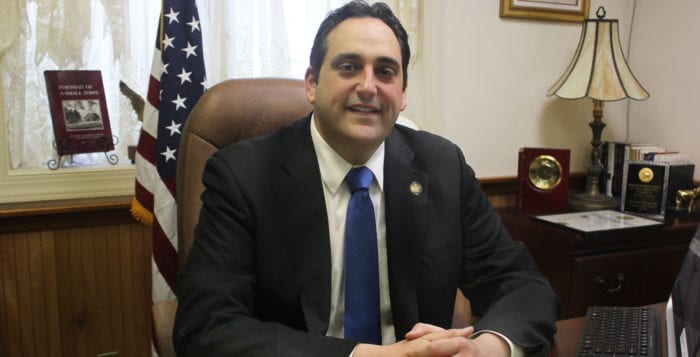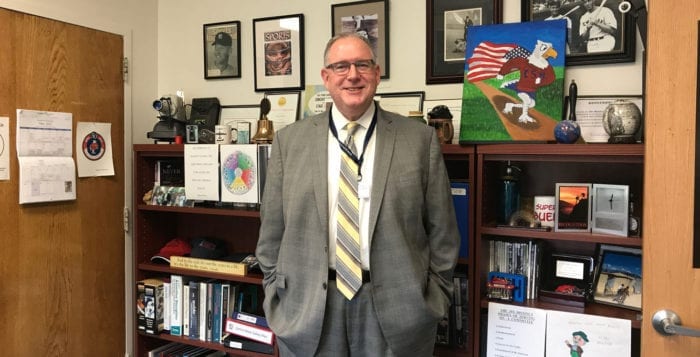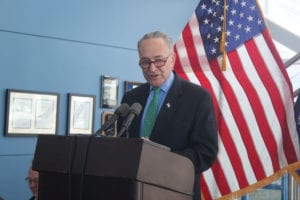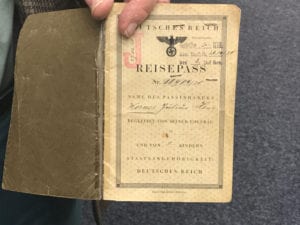After thinking he threw his last high school pitch, Shoreham-Wading River senior standout Brian Morrell continues to lead the way.
The University of Notre Dame-bound senior, who started at first base for Suffolk County, had an RBI-single that scored Commack’s Peter Theodorellis to get his team on the board first, and later scored on a wild pitch to put Suffolk ahead 2-0 at the end of the first inning en route to a 10-4 win over Nassau in the Blue Chip Prospects Grand Slam Challenge.
The best baseball players from across Long Island all squared off at St. Joseph’s College June 9, where seniors from Shoreham-Wading River, Commack, Smithtown, Northport and Ward Melville helped take home the all-star game title in front of a packed house.
Morrell said it was a great experience playing under the bright lights with and against the best players on Long Island, even despite it being an exhibition game.
“There’s definitely a competitive edge between the two counties going into the game,” he said. “We had a lot of fun and the energy was awesome throughout the game.”
Rocky Point baseball team’s head coach, Andrew Aschettino, served in the same role for the Suffolk County team. He said part of his message before the game was for the players to embrace the opportunity to represent their family, their school and the county.
“If you heard them throughout the game, it was pretty cool — there was definitely a pride thing going on,” he said. “I told them before the game — ‘you’re here for a reason and just go do what you guys do, enjoy it though. Don’t get caught up in the pressures of it, just enjoy it because you’re one of a select few kids that get to play in this thing every year.’ It was really cool to watch them do their thing.”
The Suffolk squad tacked on another run in the third on a sacrifice fly by Babylon’s Ken Gordon, and two more on a two-run single by Greg Tsouprakos of West Islip in the fifth. Morrell’s Shoreham-Wading River battery-mate Thomas Brady doubled and scored in a two-run sixth inning to extend the lead to 7-0.
“It’s an honor playing with all of these guys,” Brady said. “I played with all of them when we were young. Just to get back on the field with them — catch some of them — it’s an honor. It’s great. I love all of these guys.”
Smithtown East’s Michael Ruggiero and Rocky Point’s James Weisman each pitched a clean inning.
“It was a great experience being able to play for my high school coach one last time,” Weisman said of his unique position. “My whole life I’ve dreamed of being the player that I am today, and I still want to succeed and do better.”
Aschettino said he was also excited for the opportunity to take the field with a familiar face.
“It was a pleasure that I got to spend one more game with him, because he played for me for so long,” the coach said of his four-year varsity starter. “[Weisman] was just the greatest kid in the world to coach. He works his butt off everyday, so I was very, very excited that I got to coach him for one more day.”
Shoreham-Wading River outfielder Nick Manesis joined Morrell in the starting lineup in right field for Suffolk, though he struck out in his only two at-bats. Nick Trabacchi of Smithtown West reached on two walks, stole a base and scored a run. He also pitched the seventh inning and allowed the first two hits of the game for Nassau. Outfielders Joe Rosselli, of Ward Melville, and Frank Stola, of Northport, also saw some action. Tsouprakos took home the most valuable player award, and Hauppauge’s Matt Overton was named the offensive player of the game for Suffolk.



























